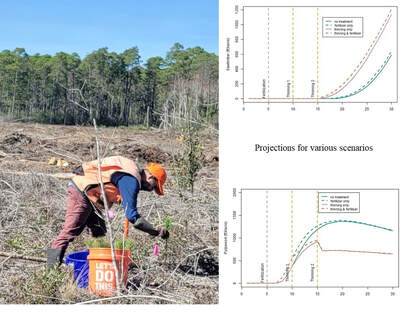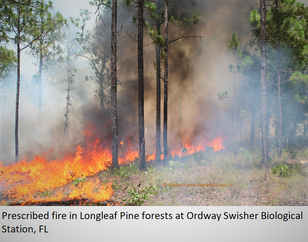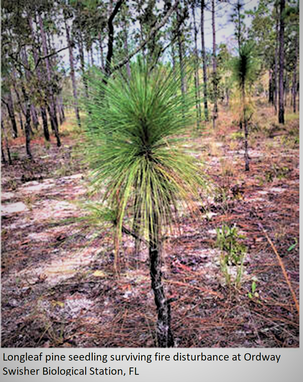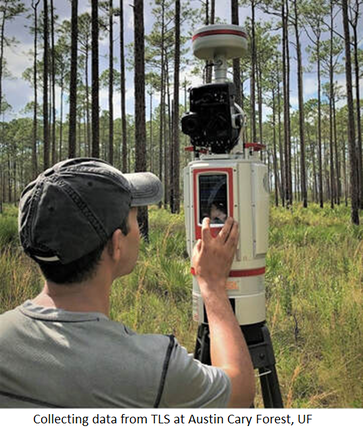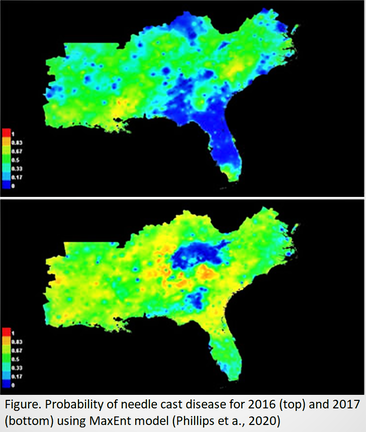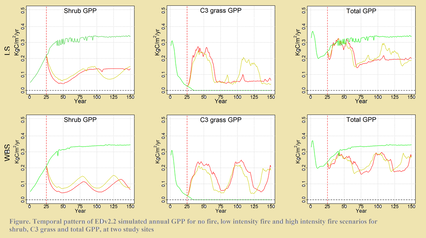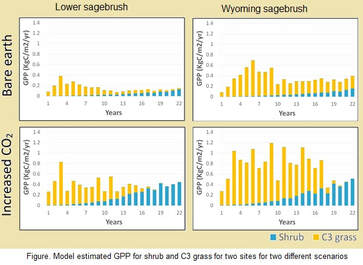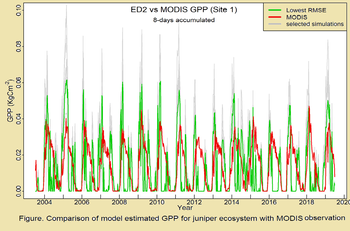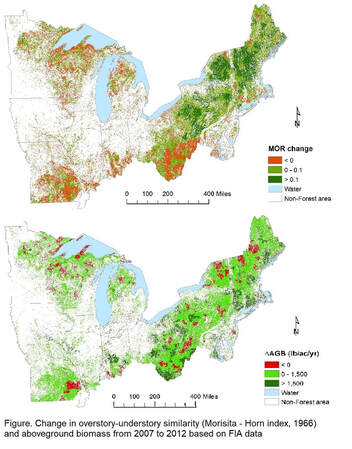|
|
|

My recent research studies are focused towards exploring the effects of natural (wildfire, insects, pathogens, drought, hurricanes) and anthropogenic (logging, prescribed fire, herbicides) disturbances on terrestrial ecosystem, in the face of climate change. In these studies, we try to understand and forecast potential shifts in vegetation range, adaptation of plant communities through changes in traits and physiology, and the role of management interventions in sustainable use and conservation of natural resources. I believe multi-disciplinary research studies are very effective in addressing the scientific problems we face today, as most of our studies are interrelated in so many ways.
Recent Studies
Recent Studies
|
Forest Carbon Modeling Framework
Develop modeling framework to predict forest stand volume and forest carbon sequestration for alternate silvicultural management and climate scenarios, based on commonly used forest growth models, various spatial data including site index, soil type, physiographic variables, and sawmill distribution. Explore and develop pathways for post-harvest forest products to understand fate and longevity of carbon stored in various forest products. |
|
Impact of disturbances on forest ecosystems across the U.S. Natural and anthropogenic disturbances in the terrestrial ecosystems have been increasing in intensity and frequency in the recent years. We are assessing the impact of stand-replacing disturbances (natural and anthropogenic) and non-stand-replacing disturbances on forest ecosystems across the United States using machine learning approaches. We use annual forest inventory (FIA) data, monitoring trends in burn severity (MTBS) data, climate data, and remote sensing data to analyze changes in forest structure and composition. This is a joint study of Department of Biology, University of Florida (UF), School of Forest, Fisheries, and Geomatics Sciences (FFGS), UF, and USDA, Forest Service. Figure in the right shows surviving longleaf pine seedlings post prescribed fire disturbance. |
|
|
Forest diseases in the southeastern U.S.
Early detection and assessment of potential future risks will help forest managers minimize the damage from diseases. My research efforts are aimed at quantifying and developing tools for early detection of disease and forecasting its range and intensity for future alternate climate and management scenarios, using hyperspectral satellite images, LiDAR data, and machine learning. In one such study, we are investigating spatiotemporal patterns of fusiform rust disease in southeastern United States. We apply generalized linear mixed model (GLMM) and machine learning approaches (Random Forest, Support Vector Machine, Gradient Boosting Machine, and Artificial Neural Network) to predict future disease condition. In another study, we analyzed tree traits and climatic variables associated with foliar disease in pine trees in southern United States by applying GLMM and machine learning (Maximum Entropy) approach. FIA inventory data and PRISM climate data. are used in the analysis. This was a collaborative effort of researchers from FFGS, UF and Warnell School of Forestry and Natural Resources, University of Georgia. Findings from this study has been published in the Forests journal. The figure in the left shows probability of needle cast disease occurrence for 2016 and 2017 based on the MaxEnt model. |
|
Impact of fire on sagebrush ecosystem
Explore the performance of fire module in EDv2.2 model at different temporal and spatial scales using MODIS-derived Gross Primary Productivity (GPP) in the Great Basin of the western United States. This study was supported by Joint Fire Science Program, USDA Forest Service WWETAC, and NASA-TE. Some of the findings from this work has been published in Biogeosciences journal. We observed that the fire model in EDv2.2 captures multi-decadal vegetation dynamics fairly well, with better performance for the lower-elevation sites. Under the no-fire conditions, shrubs were dominant and C3 grasses disappeared while approaching an equilibrium state of only shrubs (Figure in the right top) . In fire scenarios, we observed a decline in shrubs and a simultaneous rise in C3 grasses for approximately 3 to 4 decades, followed by slow recovery of shrubs at the expense of grasses. Regional simulation of GPP with EDv2.2 showed continued reduction in GPP for several years post-fire, which only started to recover with some increase in C3 grass GPP by the fourth year after fire (Figure right bottom). Modeled GPP trends moderately correlated with the trends observed from MODIS GPP. |
Earlier studies
|
Estimate ecosystem productivity of sagebrush and juniper ecosystems
We performed sensitivity and optimization analysis of sagebrush Plant Function Type (PFT) parameters, related to photosynthesis, stomatal conductance, and allocation to improve ecosystem flux estimation in Ecosystem Demography (EDv2.2) model. EDv2.2 estimated gross primary production (GPP) using optimized shrub parameters compared well with observation from Flux tower sites. Model simulations suggested almost double overall vegetation productivity with an increase in CO2, with shrubs replacing C3 grass quickly compared to existing CO2 scenario (Top figure). The study was supported by Joint Fire Science Program and NASA-TE. A part of this work has been published in Geoscientific Model Development. In addition, we applied Random Forest approach to update allometric and physiological parameters for Juniper occidentalis in EDv2.2 by comparing model predicted aboveground biomass with remote sensing products. Model was able to estimate Juniper ecosystem productivity well with the updated parameters, when compared with MODIS data from the sample locations (Bottom figure). |
|
Change in timberland ownership, aboveground biomass and species composition
This was my Ph.D. dissertation study aimed at understanding the change in timberland ownerships in Northeastern United States, using geospatial modeling, poit-pattern analysis (Ripley’s K Function), and Multiple Logistic Regression. We also explored changes in aboveground biomass and overstory-understory tree species composition based on types of timberland ownerships, ecological factors and management types. Most common among all the observed shifts was the one from industrial to institutional ownership. However, we did not observe significant difference in biomass change and species composition for different ownerships (Figure). This study was supported by USDA Forest Service and Northeastern States Research Cooperative (NSRC), Part of this study has been published in the Journal of Forestry. |
Other studies
- Spatial analysis of forest crimes in Mark Twain National Forest, Missouri.
- Performance of Forest Vegetation Simulator (FVS) in estimating diameter and basal area of some of the common tree species in Northeastern United States.
- A Report on Monitoring of Gharial in Narayani and Rapti Rivers of Chitwan National Park.
- An assessment of variation of major soil properties for efficient soil management and crop productivity.
- Evaluation of indigenous techniques of terrace improvement in Paundi Khola watershed of Lamjung district, Nepal.
